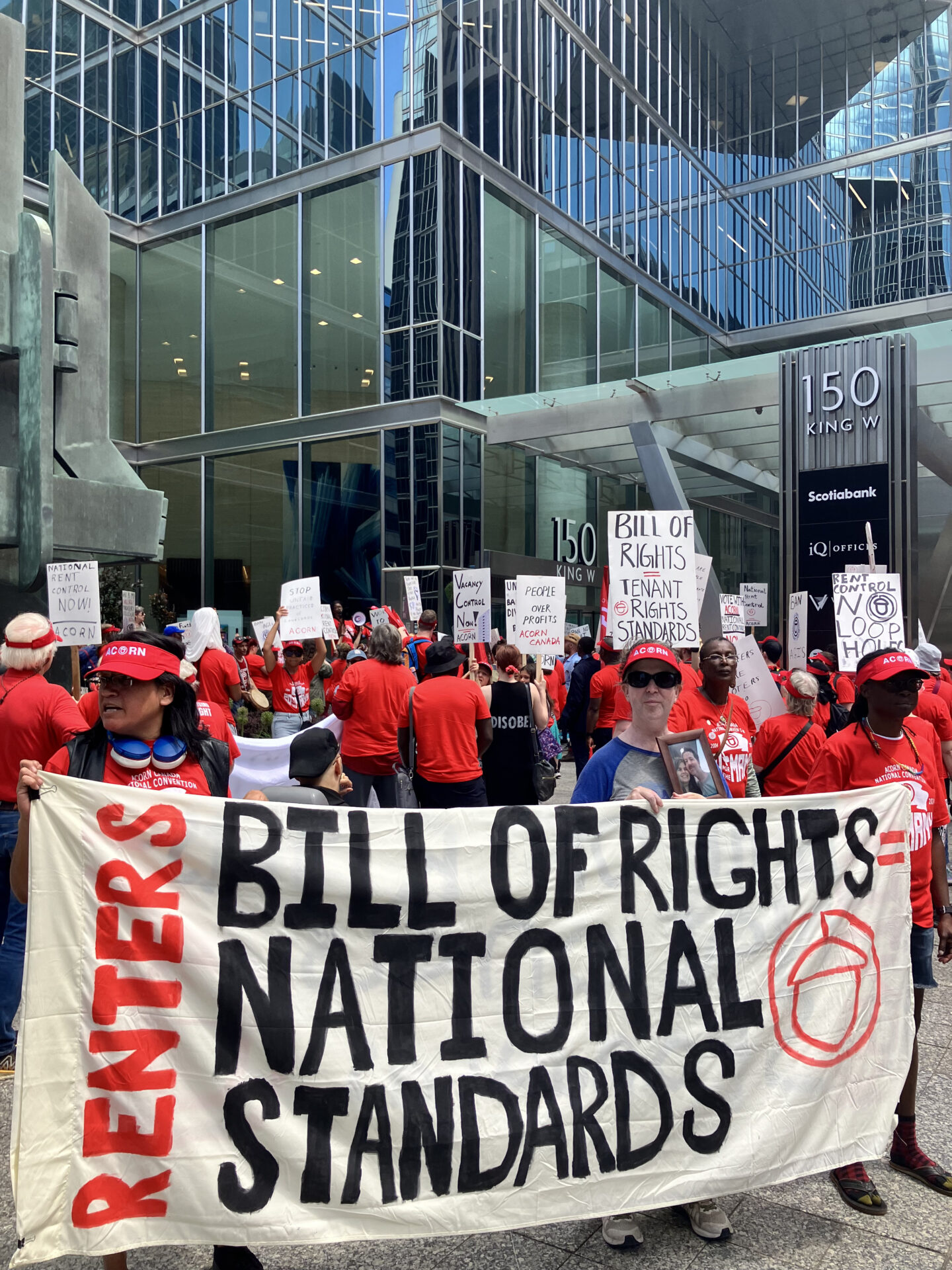Op-ed in Toronto Star: Skyrocketing rent. Evictions. Renovictions. A renters’ bill of rights could help solve our housing crisis
Posted July 22, 2024
The federal government’s housing plan announced in April included a key feature — a renters’ bill of rights.
Sounds great in times of a housing crisis, but can Ottawa get it right?
Low-to-moderate income tenants coast to coast are struggling with skyrocketing rents; illegal and unaffordable rent increases; lack of regular repair and maintenance; threats by corporate landlords for eviction; renovictions; demovictions; no-fault evictions and more. These issues have only worsened in recent years with the financialization of rental housing coupled with inadequate tenant protections.
In the absence of rent control, weak rent control and vacancy decontrol, tenants are under constant threat of eviction which violates their security of tenure.
Ontario, for instance, has partial rent control. While there is no rent control in buildings built after November 2018 in the province, even in rent controlled buildings, above guideline rent increases, known as AGIs, are rampant as corporate landlords use this loophole to increase rent above guidelines to pass on to tenants the costs of basic repair and maintenance.
In British Columbia additional rent increases are becoming a popular tool to raise rent above provincial guidelines. Alberta has no rent control whatsoever.
Nova Scotia has a temporary rent cap which ends in 2025 and fixed term leases in the province make tenants vulnerable to landlords who choose not to renew a lease after the one-year contract expires.
Given this patchwork of tenant protections across the country, a renters’ bill of rights can go a long way. But for it to be transformative, it must set national tenant rights standards that apply to all provinces and territories.
These standards need to include core protections such as a national lease structure that gives tenants security of tenure and limits rent increases; rent control with no loopholes such as AGIs; a ban on unaffordable rent increases; a ban on fixed-term leases; a ban on no-fault evictions; a national fund to help tenants fight evictions; rights to a safe and healthy rental unit; the right to organize without fear of being evicted; and transparency on landlord ownership.
This can be achieved by requiring provinces and territories to bring their legislation up to these core standards set by the federal government in order to receive federal housing funding.
Currently, billions of dollars flow from federal agencies to build housing. CMHC multi-family unit loans through mortgage loan insurance totalled $23 billion in 2023. Most of the housing built through these dollars are required to be kept affordable for only 10 years. A report by the National Housing Council found that the federal government’s biggest program under the National Housing Strategy had created very little housing that was affordable to low-income people.
Another federal agency, the Canada Infrastructure Bank, is financing corporate landlords to undertake deep retrofits but as a recent survey by ACORN in Alberta shows, in the absence of any conditions attached to the funding given by CIB to Avenue Living, which is Western Canada’s fastest growing real estate investment trust, tenants are getting rent increases in the range of $500 and $800 a month.
Public dollars must be used to build affordable housing and ensure that current tenants are not displaced.
The federal government can make the national tenant rights standards work by entering into bilateral agreements similar to early child care where each province and territory reports to the federal government annually on how they are using the federal funding and meeting the standards.
As the federal government moves ahead in developing the renters’ bill of rights, this is an opportune moment to meet with tenants’ groups and get this right.
****
Op-ed by Alejandra Ruiz-Vergas is the National President of ACORN Canada, a national community union of low- and moderate-income people for Toronto Star

